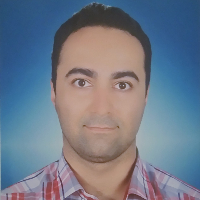A study on the expression of HASPA2 and HSPB1 genes and gene ontology in the liver of Khorasan native chickens under acute heat stress
Heat stress is one of the main environmental factors causing economic losses to the poultry industry, as it reduces growth and production performance of chickens. The heat shock proteins (HSPs) involved in the key cellular defense mechanisms during exposure in hot environmental conditions. Elevated level of expression of HSPs helps to overcome the stress caused by high temperatures. The aim of this study was to evaluate the expression level of HSPA2 and HSPB1 transcripts in the liver of Khorasan native chickens under acute heat stress. Sixteen 42days old chickens were divided into two groups of control (25 C and 50% humidity) and heat treated (40 and 42 C, 50% humidity for 24h), and then the liver was sampled after killing. The transcription level of HSPA2 and HSPB1 was evaluated using RT-qPCR method. The HSPA2 expression was significantly induced (P0.05). However, the expression of HSPB1 did not show any change. The analysis of protein-protein interaction revealed that HSPA2 and HSPB1 had no interaction, however, four pathways in gene ontology including Protein processing in endoplasmic reticulum, Progesterone-mediated oocyte maturation, MAPK signaling pathway and VEGF signaling pathway had the highest significancy. The results indicated that Khorasan native chickens have suitable genetic reaction to acute heat stress and HSPA2 has the ability to express under high ambient temperature to protect the structure of cellular proteins.
-
Recombinant Glutamate Decarboxylase to Increase Gamma-aminobutyric Acid Production
Hanieh Yarabbi, Sahar Roshanak, Seyed Ali Mortazavi, Masoud Yavarmanesh *,
Research and Innovation in Food Science and Technology, Autumn 2024 -
In ovo Inoculation of cLF36 on Post-hatch Performance, Intestinal Histo-morphometry and Microflora of Broiler Chickens Challenged with Clostridium perfringens
Seyed Mohammad Mahdi Sadati, Hassan Kermanshahi *, Mohammad Hadi Sekhavati,
Poultry Science Journal, Summer -Autumn 2024



